Laki Power monitoring station on a transmission line in Iceland
Laki Power: Transforming line monitoring for power grid operators
Modern electrical grids are incredibly complex networks that must constantly adapt to shifting demands and power supplies.
Despite our advanced technologies, grids are still vulnerable to extreme weather conditions, fires, and intentional circumstances that can render them inoperable, causing system-wide failures. The sheer distances electrical grids cover makes monitoring power lines—particularly in remote areas—a complex and expensive endeavor for power companies.
Electrical transmission system operators (TSOs) and distribution systems operators (DSOs) manage and maintain millions of kilometers of electrical lines worldwide. Many of these overhead electrical lines are exposed to severe weather conditions, both hot and cold, that can permanently interrupt supply or damage infrastructure. Heavy ice loads on both towers and the lines can cause hazardous line sagging and even tower collapse, resulting in dangerous flashovers to nearby objects such as trees. Ice buildup can even turn wires into “wings” in windy conditions that make the lines gallop up and down. Conversely, hot conditions are very damaging to lines as well. Not surprisingly, hot weather generally coincides with peak electrical demands for cooling. More demand means more current that heats the wire internally with hot weather to cause expansion and line sagging. In addition to financial damages, these conditions may harm people and animals and render already strained systems in blackout conditions.
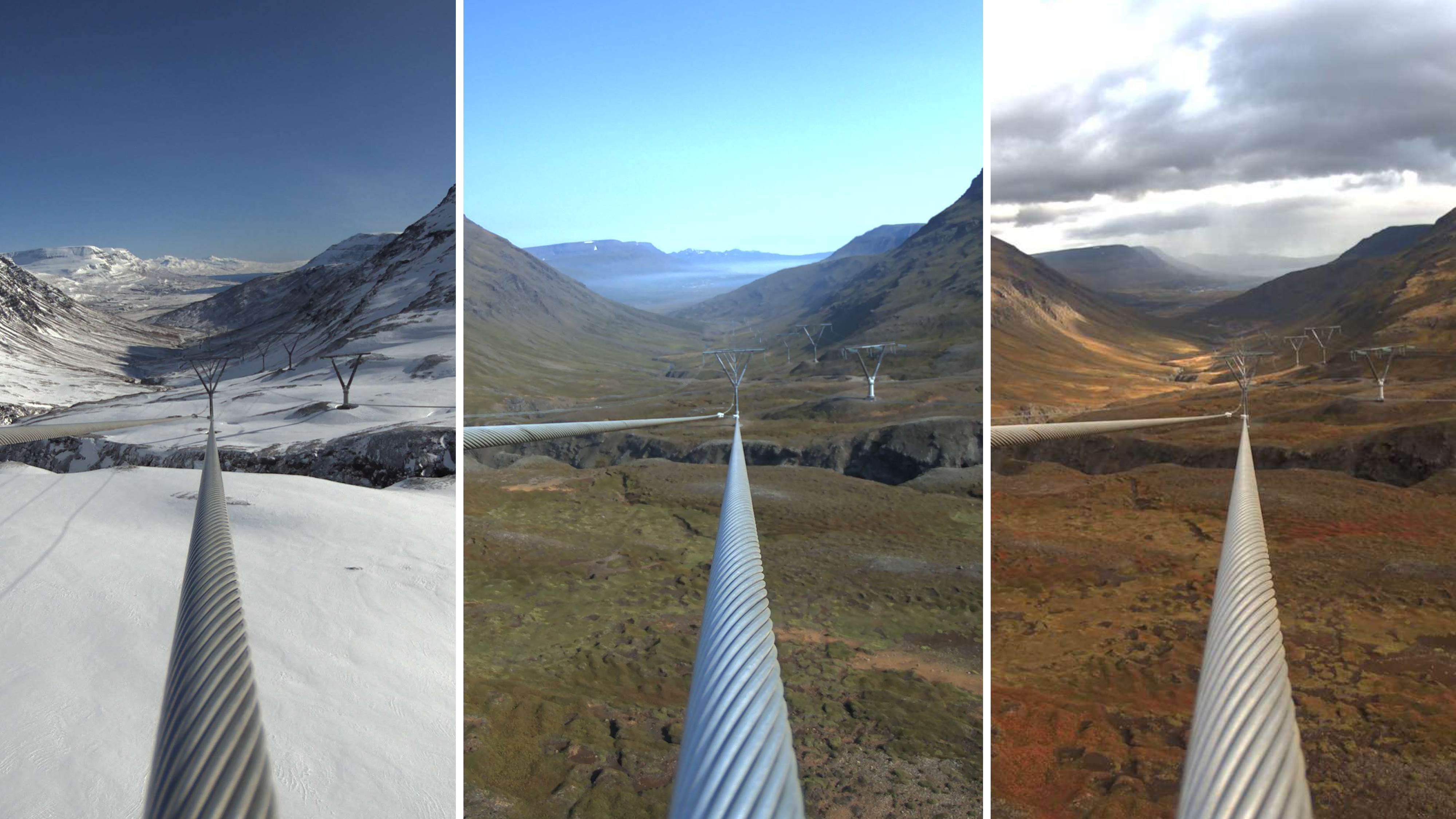
Laki Power monitors lines for all seasons. Image: Laki Power
Ironically, despite being next to an abundance of power, access to operational voltage levels (400/230V AC) to power monitoring devices at these remote locations is lacking, not viable, and often extremely costly.
TSOs and DSOs will usually install diesel generators, wind turbines, or solar panels to generate electricity to power monitoring equipment for lines and infrastructure. These technologies work fine under ideal environments but often fail in harsh “real world” severe cold and hot conditions. Additionally, diesel generators cause harmful emissions and noise pollution and often necessitate road access through sensitive environments for refueling and routine maintenance. Solar technology has limitations in far northern and southern latitudes, where half the year, there is near-total darkness, and deep snowfall and ice can cover the panels.
In 2004, Óskar Valtýsson, an Icelandic engineer-inventor specializing in developing and manufacturing electronic devices, first conceived a new method for powering monitoring devices. Mr. Valtýsson was also well aware of the growing industry need for TSOs and DSOs globally to monitor power lines inexpensively and securely. Like so many classic start-ups, Mr. Valtýsson got to work in his garage shop refining his idea. Laki Power was incorporated in 2015 to design and build its first product called the Power On-Line Generator—or POLG for TSOs and DSOs. Early on, Laki Power worked closely with Icelandic TSO Landsnet, which operates all the above-ground high voltage transmission lines across the country to the local distributors. Landsnet was aware of trouble sections where snow and ice accumulated and posed hazards but often lacked information on the current conditions of its lines. These places are remote and difficult to access—especially when the weather is at its worst, and accurate monitoring is required most. Laki’s POLG unit was the first version of its patented technology, and inside were an array of monitoring sensors and cameras. For Laki, there was no better testing ground for extreme weather! These power lines experience some of the harshest conditions and are routinely susceptible to hurricane-force winds, icing, and salty conditions.
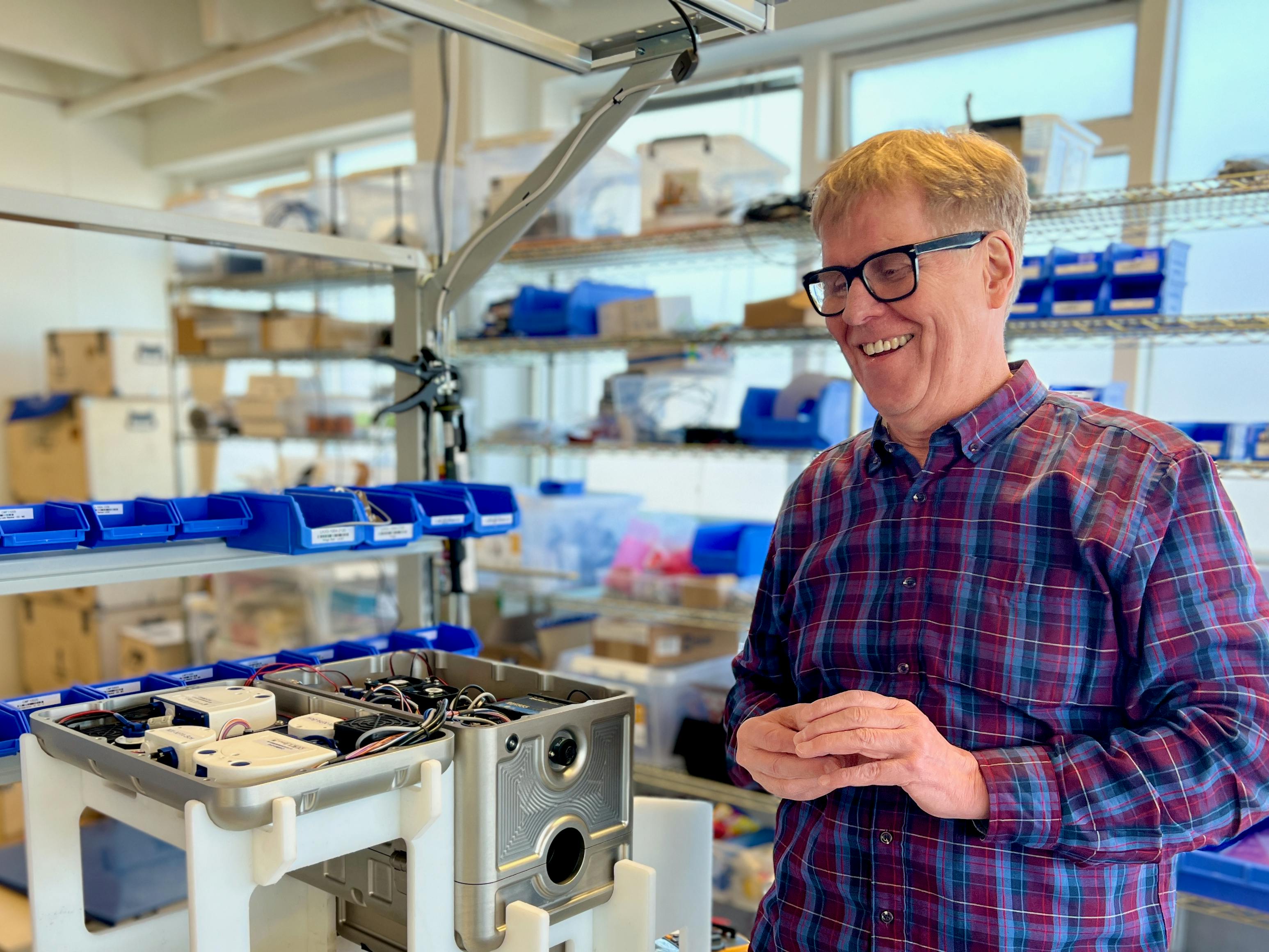
Óskar Valtýsson in Laki Power's workshop. Image: Parker O'Halloran
Today, Laki manufactures various powerline monitoring solutions, and the technology has evolved rapidly since the POLG’s introduction in 2015. However, Laki’s solutions are unique in how they power themselves. Inside of every Laki product is its patented PowerGRAB electromagnetic energy harvesting technology. A Laki device clamps onto any alternating current (AC) carrying phase wires of high voltage power lines. It “harvests” the electromagnetic radiation that consists of waves of electric and magnetic energy moving through the large-diameter wires of high-voltage electrical lines as a usable low-voltage DC output. PowerGRAB achieves 100x greater efficiency than other solutions, enabling an exceptional range of peripheral systems. More power means more monitoring equipment in each monitoring solution without building or maintaining additional power systems. PowerGRAB is a clean and stable power platform, unaffected by fluctuations in the phase wire current flow, making it ideal for external surveillance and measurement devices and sensitive internal monitoring sensors. Best of all, clamping one Laki device, or 100 for that matter, on a long stretch of the powerline will not affect that line’s current or voltage levels nor its power throughput by only harvesting the electromagnetic radiation.
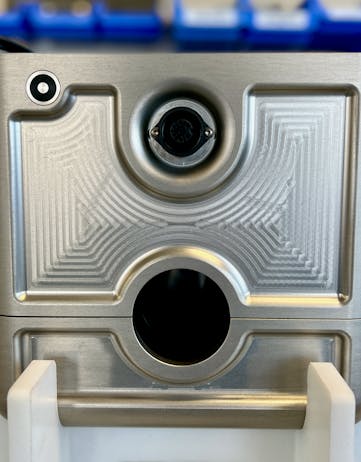
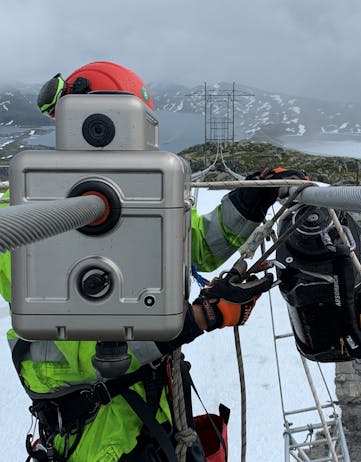
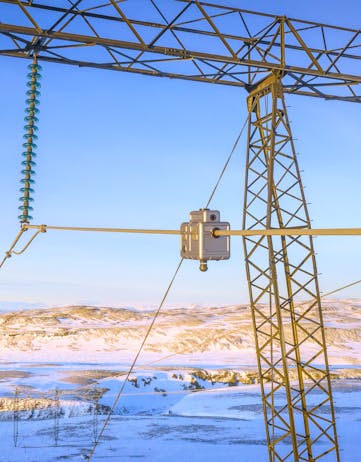
Depending on the needs of a TSO or DSO, Laki sells three types of monitoring stations: 1) Real-time environmental monitoring, 2) Visual inspection & surveillance, and 3) Fire & thermal event detection. Each provides real-time detection of events and alerts to issues in the system. The stations are incredibly durable, nearly silent, and environmentally friendly. Sensors can measure the dynamic line rating (the maximum electrical load a wire can tolerate when environmental conditions allow, without compromising safety) and provide live streaming from high-resolution cameras for situational awareness and thermal imaging for detecting fires. Depending on the configuration, the stations vary in pricing but generally start around EUR 16,750 (USD 18,000). The stations connect through the mobile network to stream station data. The aluminum enclosures for monitoring stations are precision milled in the Czech Republic, with the internal components made by contract manufacturers globally. The final assembly of each unit takes place in Laki’s workshop in Iceland. The Laki Analytics Studio software ties all the metrics from stations together into a user-friendly solution to monitor systems securely from your desktop or mobile device.
Not surprisingly, estimating the cost savings of preventative measures is complex and varies tremendously globally. For example, to replace one damaged tower and lines will vary greatly depending on tower design, line rating, and access to the area. Annually, industries in Europe experience millions of Euros in losses due to power disruptions. According to Landsnet (2017), the average cost of replacing a 220kV transmission line is approximately EUR 667,000 (USD 704,000) per kilometer (0.6 miles), with the rebuilding of a single tower, including materials, and labor, estimated to be EUR 97,000 (USD 103,000 ).
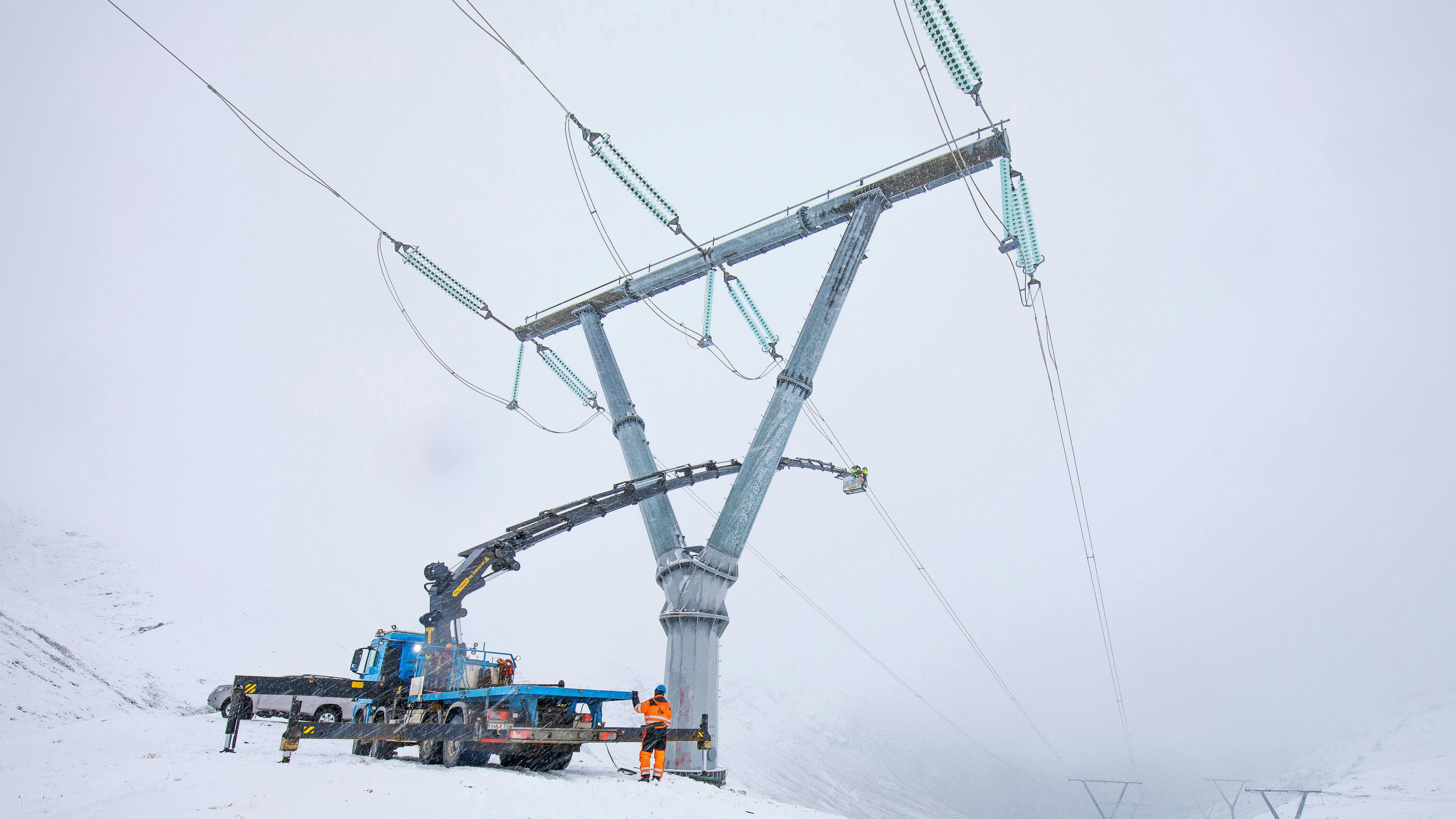
Installation of a Laki Power monitoring station in Iceland. Image: Laki Power
As society electrifies and, in particular, more electric vehicles enter the marketplace, and greater demand will strain existing systems and aging infrastructure. New sources of electricity—particularly wind and solar, mean that networks need to be more agile, resilient, and adaptable to incoming generation and shifting peak demands. While Laki is designing products for an extremely niche market of TSOs and DSOs, the reliability of these networks has real-world consequences. By helping TSOs and DSOs maintain optimum awareness of lines and the ability to pinpoint disruptions quickly, Laki is helping to provide more reliable, safe, and cost-effective electricity for consumers globally. Undoubtedly, as Laki continues to grow, the company will identify further uses for its stations and new equipment to take advantage of the PowerGRAB technology.